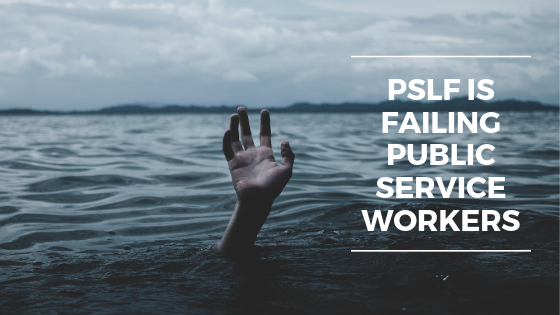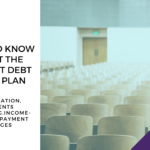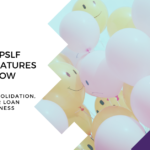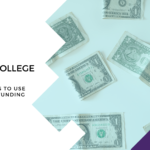By Jeni Burckart This post is a modified version of an original post by Jeni on LinkedIn
PSLF is designed for lower income borrowers; like teachers, who may otherwise have difficulty repaying their student loan debt. These borrowers require college education for their professions, but often don’t see the salary increase of other college graduates. Many of these employees have been counting on PSLF since its inception in 2007, only to find out that they didn’t meet very specific eligibility criteria.
Public Service Loan Forgiveness (PSLF) is a forgiveness program designed to help employees working in the public sector with their student loans. It forgives the remaining balance of federal student loan debt after at least 10 years of public service work. The program is set up to incentivize graduates to work in the public sector, compensating for lower wages with the promise of student loan forgiveness.
Here’s what you need to know about the success rate of PSLF, and what needs to change for that to improve.
What is PSLF?
PSLF forgives the remaining federal student loan balance after 120 eligible payments, tax free, for borrowers working in qualifying employment such as working for non-profit, government, or tribal organizations.
PSLF has many specific criteria for eligibility. Here are the major criteria for forgiveness under the program.
-Borrowers must work in eligible employment.
-Borrowers must have Direct Loans.
-Borrowers must be making eligible payments. Eligible payments are those payments that are made under an income-driven repayment plan. Payments made under the 10-year standard plan are also technically eligible, but there would be no remaining loan balance to forgive at the end of 10 years under this plan.
How successful has PSLF been so far?
The first borrowers were eligible for PSLF in October of 2017. As of March 2019, only 518 borrowers received loan forgiveness under the traditional PSLF while 442 borrowers received forgiveness under the Temporary Expanded PSLF program. That’s about 1% of total applicants.
How does PSLF compare to other types of loan forgiveness?
The Department of Education operates more than one federal loan forgiveness program. Teacher Loan Forgiveness is another program that offers loan forgiveness to qualifying teachers in low-income schools. The Borrower Defense program offers cancellation of student loans in the event of school closure.
Although no specific number of applicants are available, in its first year Teacher Loan Forgiveness granted forgiveness to 14,550 borrowers.
And the Borrower Defense program has approved the claims of nearly 48,000 borrowers.
The comparative rates of approval in Teacher Loan Forgiveness program and Borrower Defense program signal a fundamental flaw in the execution of PSLF.
What is the problem?
The primary issue seems to be one of strict eligibility criteria, communication, & expectation management. The Department of Education didn’t provide significant guidance on eligibility criteria for PSLF until 2012. Many borrowers assumed working in public service was enough, only to find out that their employment didn’t count.
Another common cause of denial is borrowers with ineligible student loans. Prior to 2007, federal student loans were FFEL-type loans. Although still federal student loans, these loans aren’t eligible for forgiveness under PSLF.
The final source of denial under PSLF is borrowers not repaying their student loans under an eligible repayment plan. Only payments made under one of the income-driven repayment plans or the 10-year standard repayment plan are eligible.
How can PSLF help those borrowers it’s intended to help?
The first problem is one of communication. Borrowers believe they’re eligible to get loan forgiveness when they haven’t taken necessary steps. This is challenging because borrowers often avoid their student loan debt out of fear of the unknown. The rules for PSLF are nuanced, leading to rejection when specific steps aren’t followed.
The Department of Education must develop better methods of communicating PSLF requirements to borrowers. This includes ensuring proper counseling from student loan servicers for borrowers inquiring about PSLF.
The second problem facing PSLF is poor flow of information between borrowers, student loan servicers, and FedLoan servicing (the servicer responsible for tracking PSLF). This results in missing eligible payments, miscounted eligible payments, and delays or denials of loan forgiveness. Borrowers need the ability to track their eligible payments in real-time and access all of their eligibility information for the entire 10-year period they’re working toward PSLF.
The third problem is that the eligibility for PSLF is too complex. If the goal of the program is to offer relief from student loan debt for borrowers with low income working in public service, the complexity can be simplified.
For example, offering the program only to borrowers with Direct Loans significantly increases the complexity for both borrowers and the Department of Education. Those borrowers can consolidate their older FFEL loans to make them eligible for forgiveness, which requires additional paperwork and processing by the Dept of Ed. Consolidation is also a step that many borrowers don’t realize they need to take. However, if a borrower has already been making eligible payments and they consolidate, they’ll have to start all over on the 120 eligible payments.
Elimination of complex loan eligibility criteria would be the most straightforward start to fixing PSLF. Enabling both FFEL and Direct Loans to be eligible for PSLF would eliminate an unnecessary step while staying true to the intent of PSLF. Until then, enhanced communication to eligible borrowers with consistent messaging and training of federal loan servicers can help borrowers pursuing PSLF get and stay on track.
Jeni Burckart is a licensed pharmacist, prominent student loan expert and Senior Director of Healthcare for Tuition.io.




